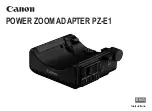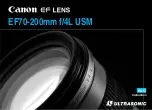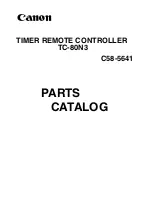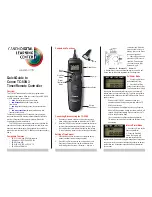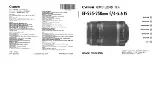
S
low
S
hutter NR
Outstanding clarity in low-light shooting.
Image noise – unwanted flecks and specks
of color – is always a concern in digital
photography, especially in low-light shooting.
In the dark, the strength of the desired image
is relatively weak compared to the “fixed
pattern noise” of the image sensor. The
Sony Super HAD
™
image sensor design
works to overcome this problem with
microlenses that maximize the incoming
light. A second Sony technology, Slow
Shutter NR, goes further still. After taking
your pictures, the feature takes a second
“exposure” of just the fixed pattern noise. By
subtracting the noise from the desired photo,
Slow Shutter NR achieves uncommonly
clear shots at night!
Anti-du
s
t technology
Extra protection for the image sensor of
the
a
100.
Digital SLRs have a dirty little secret: dirt
and dust are attracted to the image sensor
surface, degrading the picture. Once there,
dust is excruciatingly difficult to clean.
That’s why the Sony
a
100 camera has
comprehensive anti-dust technology. A
special Indium Tin Oxide CCD coating helps
repel dust. What little dust gets past this
first line of defense tends to be dislodged
by a unique CCD “shake” routine. The
result? Minimum dust, maximum clarity!
Night
S
hot
®
s
y
s
tem
Captures shots where others cameras
can’t – in low light or no light at all!
Most cameras are limited to visible light, but
Sony’s DSC-H9 has no such limitation. The
NightShot system illuminates your subjects
with infrared light, which the camera uses
to record an incredible image. With the
NightShot system, you can literally see in
the dark.
The image sensor converts incoming light
into electrical voltage. But before it becomes
useful, this voltage must first be converted
to digital. Even then, the digital information
goes through several processes before it
becomes a digital picture. Most of these
processes are undertaken by the “brains”
of a digital camera, the image processing
integrated circuit.
An
a
log-to-digit
a
l conver
s
ion
At first, the amount of light at each image
sensor pixel is represented by a continuously
variable, analog voltage. The voltage for
each pixel is converted into a digital sample,
made up of computer 1s and 0s. For each
sample, more binary digits (bits) result in
greater precision. Four bits per pixel result
in samples such as 0101. This yields a
maximum of 16 possible shades of color.
Eight bits (samples such as 01010101)
result 256 possible shades. Fourteen bits
(samples such as 01010101010101)
result in 16,384 possible shades!
The im
a
ge
proce
ss
or
25
Even in total darkness (left), the NightShot system captures an image with infrared light (right). (Sample photo for
illustration purposes.)
De-mo
sa
icing
Even with digital samples, we’re still short
of a complete picture. Because the image
sensor typically uses a mosaic color filter
array, each pixel is represented by a sample
of a single color only (Red, Green, or Blue).
To arrive at a usable picture, we need all
colors sampled at all pixels. The image
processor does this by calculating the likely
value for the missing colors by looking at
the adjacent color samples. This process is
called de-mosaicing.
Before de-mosaicing, the camera has just
one color sample per pixel (Red, Green or
Blue). After de-mosaicing, the camera has
Red, Green and Blue samples for every pixel.
Of these three, one is an original value
and two are calculated. At 14 bits for each
sample – Red, Green and Blue – each pixel
is represented as one of 16,384 x 16,384
x 16,384 or 4.4 trillion possible shades.
Conver
s
ion to
a
d
a
t
a
file
Before it can be recorded, the digitized,
de-mosaiced data still needs to be configured
as a computer file, typically in the Joint
Photographic Experts Group (JPEG) format.
This formatting is another function of the
image processor.
An
a
lyzing the picture content
The image processor is also required to
evaluate the picture data to optimize various
camera settings. For example, the processor
evaluates the brightness of the image in
order to set the proper exposure. It evaluates
contrast in order to set the proper focus. And
today’s most advanced image processors
can even identify subject matter in the image,
such as faces, for high-precision adjustment
of focus, exposure, flash and white balance.
24
CAMERA
S
Y
S
TEM
S
CAMERA
S
Y
S
TEM
S
S
etting I
S
O
a
nd white b
a
l
a
nce
In film photography, light sensitivity and
color characteristics are largely determined
by your choice of film stock. In digital
photography, these parameters are largely
determined by computations performed
by the image processor.
Di
s
pl
a
ying the picture
One of the joys of digital cameras is the
ability to see the picture in the LCD monitor.
The image processor supplies the right
information both when you frame the shot
and when you review pictures you’ve taken.
The image processor can even convert the
digital image into a video signal, suitable
for display on a standard definition or even
high definition television!
The ch
a
llenge of
s
peed
Because the image processor is responsible
for so many functions, it plays a major role
in the overall responsiveness of a digital
camera. In fact, if you shoot sports, pets,
kids or other fast-moving subjects, the image
processor can actually make the difference
between getting or missing the shot you want.
The image processor is partly responsible
for three of the most important speed
requirements.
Slow Shutter NR is a key to great nighttime photography.
(Sample photos for illustration purposes.)
MINU
S
CCD FIXED PATTERN
CCD FIXED PATTERN
ORIGINAL IMAGE
ORIGINAL IMAGE
EQUAL
S
DIGITAL CLARITY
DIGITAL CLARITY
The original recorded image (left) shows noise. The secondary capture (center) reveals the fixed-pattern noise of the CCD.
Slow Shutter NR creates the resulting image (right) by subtracting the noise from the original picture! (Sample photos
for illustration purposes.)
•
Start-up Time:
The time it takes from
pressing the power switch until the
LCD display shows the scene.
•
Shutter Lag:
The time it takes from
when you fully press the shutter until
the CCD captures the image.
•
Shot-to-Shot Time:
The time it takes
from the beginning of one shot to the
beginning of the next.
The ch
a
llenge of noi
s
e
In digital images, “noise” refers to mottling,
flecks and specks of color that are unrelated
to the original scene. While the image sensor
contributes most of the noise, the image
processor is another factor. In addition,
smart processing can even reduce image
sensor noise.
Noise is critically important because it puts
limits on your photography. If it weren’t for
noise, you could simply switch to a higher
ISO setting to shoot in low light without a
flash or to freeze fast action. Minimizing
picture noise means maximizing your picture-
taking opportunities.
The ch
a
llenge of blur
Even when the camera is focused perfectly,
the picture can still be a blur. The culprit?
Camera shake. Any professional photographer
will tell you that the ultimate solution to
Continued on page 26.
The image processor calculates “in-between” values to assign a sample for all three colors at every pixel.
S
hooting the digit
a
l w
a
y






























